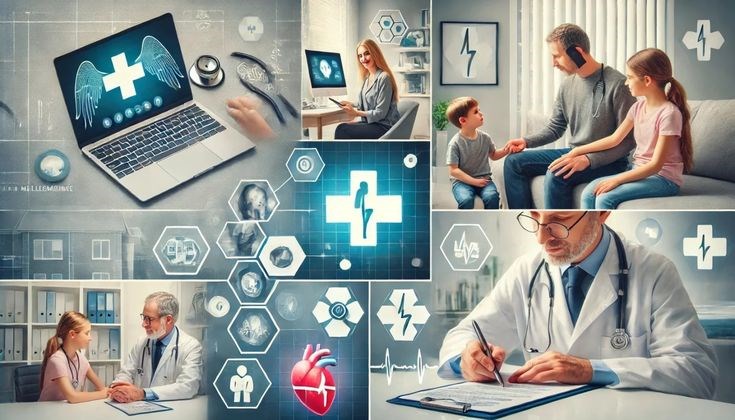Telemedicine and AI are two of the most popular trends that have a huge impact on healthcare and change its directions in global and regional levels. These technologies also reduce existing limitations and those patients can reach doctors to get healthcare services they need through online or distance. While this may not be a revolution, it goes further than a mere necessity—this is an invaluable transformation in contemporary healthcare architecture.
Telemedicine is now making it easier for patients, especially in rural and underserved areas, to access healthcare services. In addition, it saves time, increases operating efficiencies, and provides expedited and constant care. Telecommunications has advanced to the point where remote consults are indistinguishable from regular visits, whether it is for a simple physical or a serious illness.
AI has brought efficiency in the diagnostic process because of its precision and speed. They let a patient’s data be processed many times faster and identify abnormalities or risks before other techniques. From using X-ray images to the chances of a patient to survive, the role of artificial intelligence in supporting clinicians is described. It is advocating for early involvement and reduces the likelihood of a human error in critical engagements.

Telemedicine and artificial intelligence, when used together, form a model that aligns well with the concept of personalized care. Technology can also organize your health data and, based on that well-arranged information, provide a best-suited treatment to the patients, while telehealth technologies ensure patients stay connected to their caregivers. Such intervention fosters timeliness and improved results with the patient being more involved in the treatment process.
Telemedicine and AI are not just the new trends, far from it, they have become an inevitability. Over the period of time, healthcare systems are undergoing a phase of overload in terms of demand and acuteness of workforce issues and such technologies seem to be capable of addressing the issues in the best possible way with utilization of latest innovative concepts. They are not merely enhancing the quality of the delivery of health care; they are reborn the whole concept of it. It also guarantees that care is more anticipatory, friendly, and adaptable as opposed to the past more than in any other time in history.
Conclusion
In conclusion, Telemedicine and AI are not futuristic concepts—they are today’s realities that define the evolution of the healthcare industry. This is a very important function because they guarantee a quicker diagnosis, uniqueness of the treatment process, and an expanded list of services. The more the population pushes for quality health care services, the need to adopt such technologies cannot be overemphasized. They are redesigning and changing the way every aspect of delivering health care and establishing the new paradigms by which future healthcare must function – intelligent, convenient, and oriented to patients only.